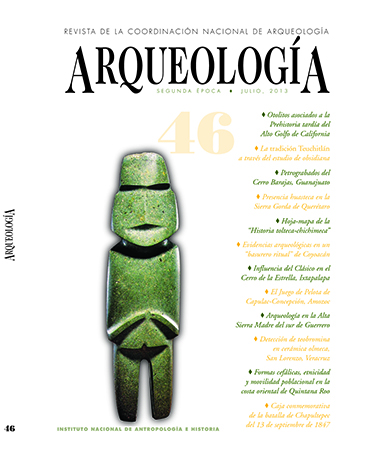Otoliths associated with a late prehistoric site
Keywords:
Prehistoric fish, Mexico-Baja California, Formative 1200 B. C. E., Postclassic 1521 C. EAbstract
Ecological and isotopic (?18O) analysis was conducted on otoliths recovered from an archaeological site dated to the late prehistory in Baja California. The objectives of this study were to address the use of otoliths as paleoenvironmental tracers and to emphasize the importance of their collection as part of the faunal remains of any archaeological site. In ecological analysis the taxonomic identification of samples were grouped into six families, four genera and five species. The length of the otolith (lo) obtained for the sciaenid group showed significant variations for three species and determined, by means of a modern-day relationship, the predominance of individuals under one year of age in the case of the totoaba (T. macdonaldi). In the isotopic analysis, the three species studied had similar values in the sample corresponding to the habitat of their capture but not in the values corresponding to the natal portion thought to be formed in the first two months of life. The preliminary results of this study seem to indicate that Baja Californian groups in late prehistory exploited more marine species in comparison to species in the mixohaline environment of the Upper Gulf of California. We think the exploitation of a breeding zone where fish would be of smaller size could only be beneficial for the ease of catching young fish. The information obtained from the otoliths offers new fields



